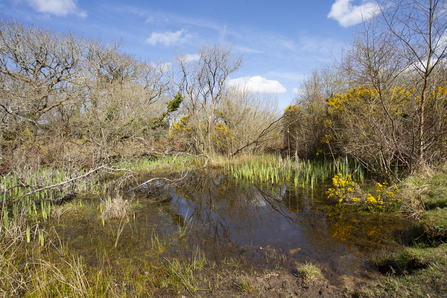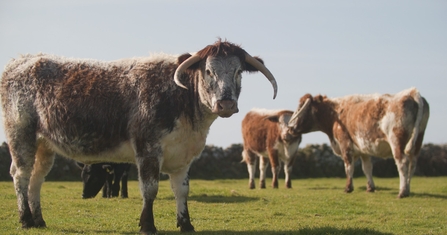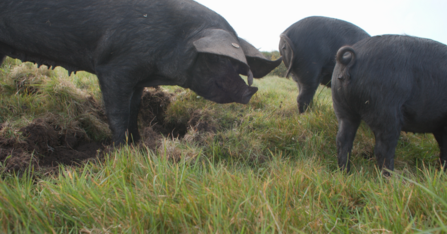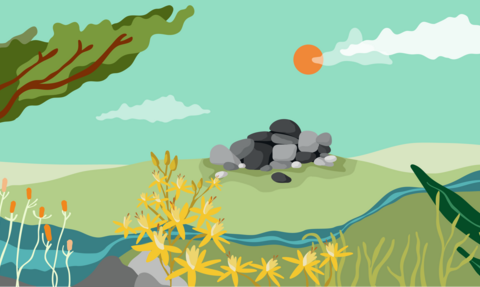Cornwall Wildlife Trust has revealed exciting plans to give nature the space to regenerate naturally with the help of large herbivores and beavers – the ‘eco-engineers’ of the past, and now of the present and future. A fundraising appeal to make this happen is being launched today, with funds needed for the purchase of specialised monitoring equipment, expertise, improved public access, and some large, hardy herbivores!
Largest ever nature recovery project in Cornwall announced
Adrian Langdon
Given the right conditions, landscapes can heal themselves, becoming richer in wildlife and more resilient in the face of climate change. This can be done by responsibly reintroducing key species that have been missing from their habitats in recent times. Filling gaps in the ecosystem can bring about the renewal of a healthy living landscape effectively. At over 297 hectares (733 acres), Helman Tor nature reserve – a mosaic of hummocky wetland, moorland, grassland and woodland – is ideally suited to host the project.

Pond at Helman Tor. Image by Adrian Langdon
Extensive research, published by Cornwall Wildlife Trust in collaboration with Cornwall Council as the State of Nature Cornwall 2020 report, showed a clear downward trend for Cornwall’s wildlife over the last 30 years, with extinctions of 21 breeding birds, four vascular plants and eight bumblebee species. According to the report, the best sites for wildlife are ‘too limited in number, size and quality and disconnected from each other’.
An important step was taken last year with Cornwall Wildlife Trust’s successful appeal to purchase Creney Farm: a site of 39 hectares (97 acres). The farmland adjoins Helman Tor on three sides. Cornwall Wildlife Trust is hugely grateful for the many donations that enabled that purchase to take place. With last year’s appeal, Helman Tor has has been made bigger; now Cornwall Wildlife Trust wants to improve it even further for wildlife.
Cornwall Wildlife Trust’s Head of Conservation, Cheryl Marriott, said: “Rewilding can lead to rapid positive results, with species returning and thriving. It could play an important role in Cornwall on sites like Helman Tor, complemented by the hard work of farmers in the wider landscape producing our food in even more regenerative ways. We have made Helman Tor nature reserve bigger thanks to generous donations, now we need to make it better. We hope that the people of Cornwall will come together to help us achieve our bold ambition.”

Longhorn cattle. Image by Nina Constable
On sites in Cornwall where rewilding principles have been reintroduced – even on a small scale – new ponds created by beavers have attracted dragonflies, amphibians and kingfishers, while dwindling birds such as cuckoos, spotted flycatchers and yellowhammers have reclaimed areas that were previously too heavily grazed or too closely cut for them to stay. Soils turned over by rootling pigs have seen the natural regeneration of grasses, wildflowers and tree seedlings.

Cornish Black Pigs. Image by Nina Constable
Funds are required to survey, sample and monitor soils and species to check progress, to stock the area quite sparsely with hardy rare breed cattle, ponies, and Cornish black pigs, and to pay for GPS trackers and expertise to check on wildlife movements. Further boardwalks are needed to allow people to watch wildlife without harming the sensitive wetlands, while some fencing may be needed to check the movements of pigs.

Rewilding Helman Tor Appeal. Image by Lisa Made It
